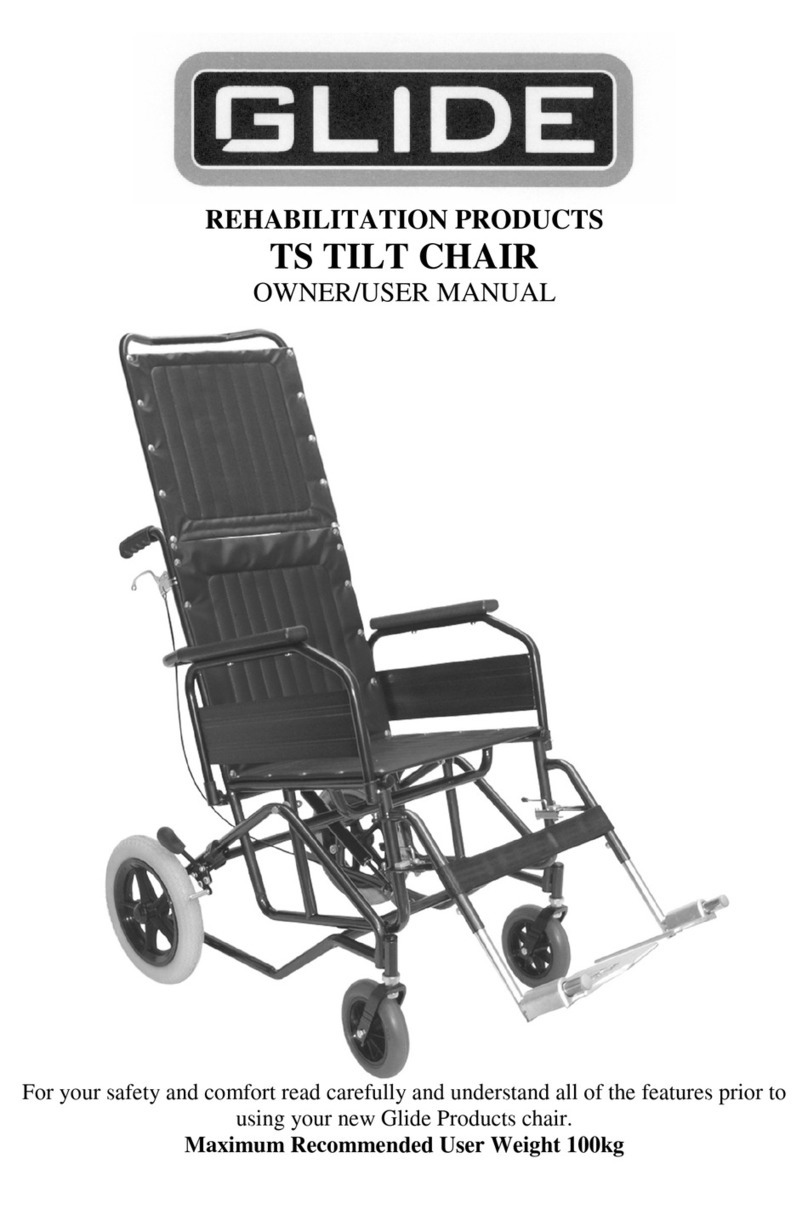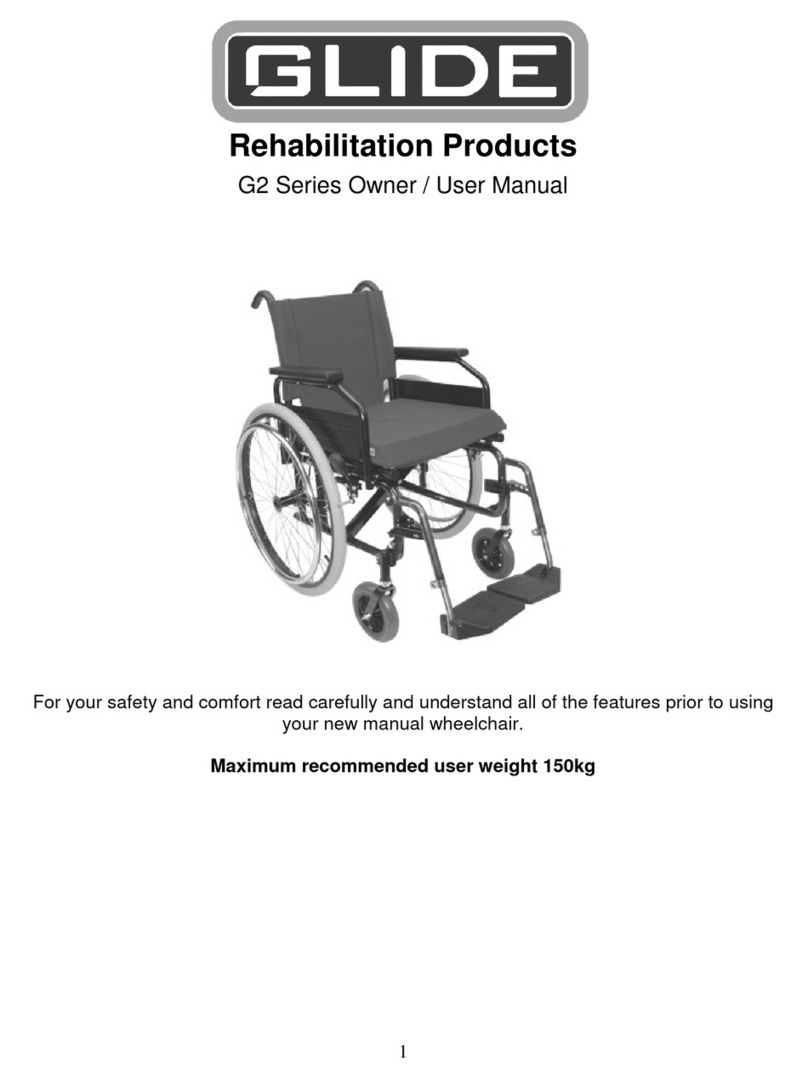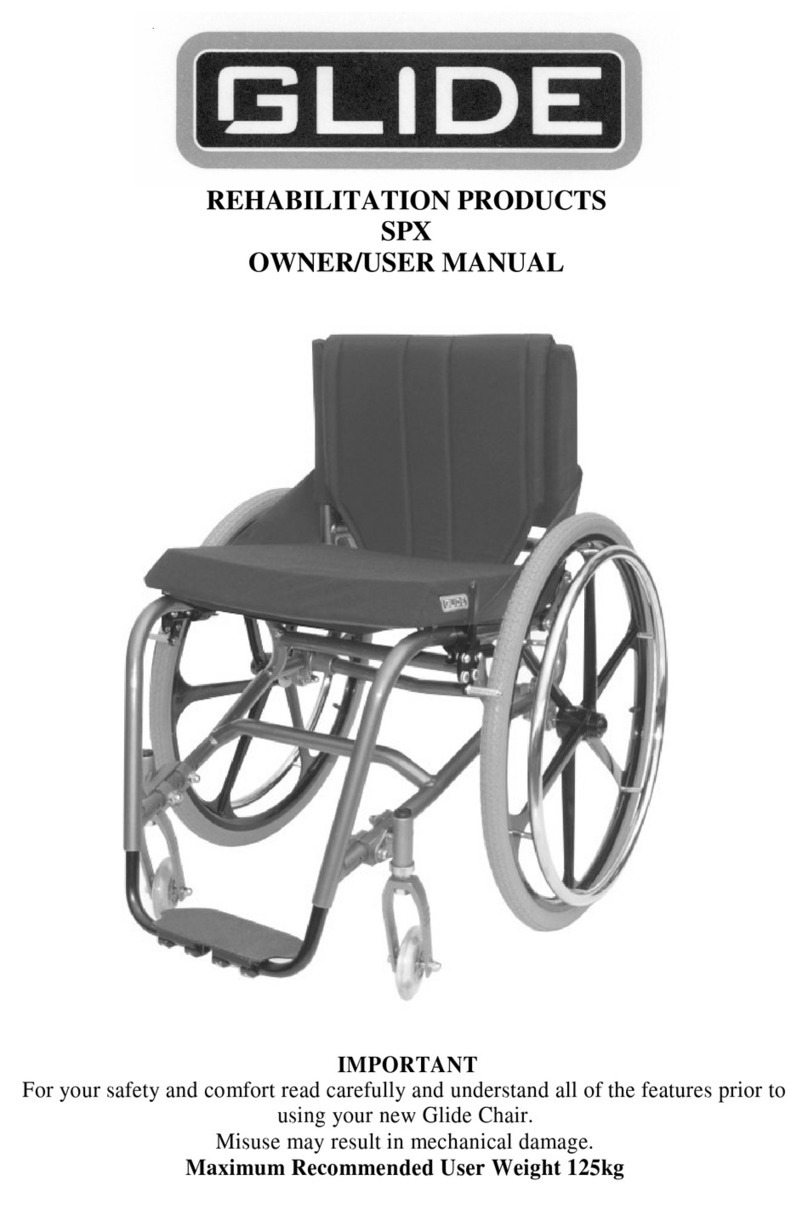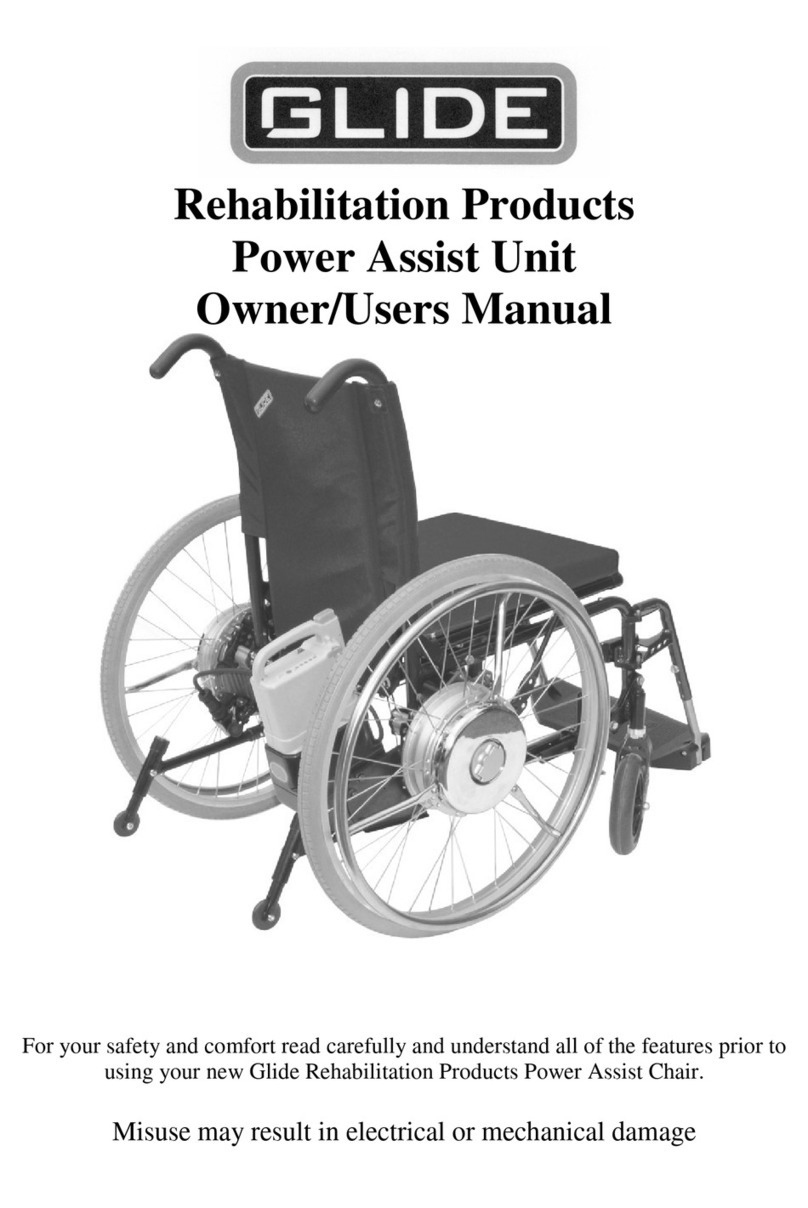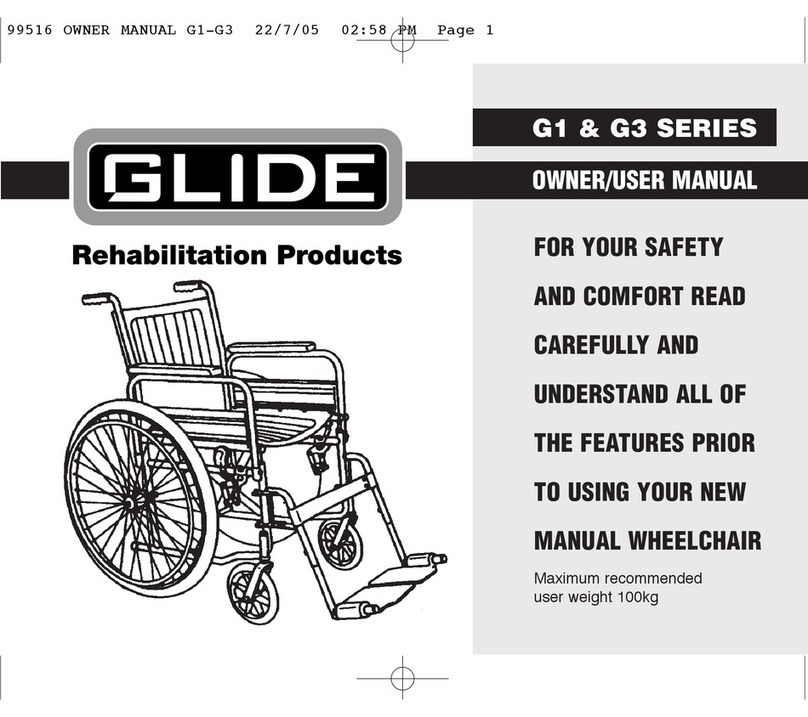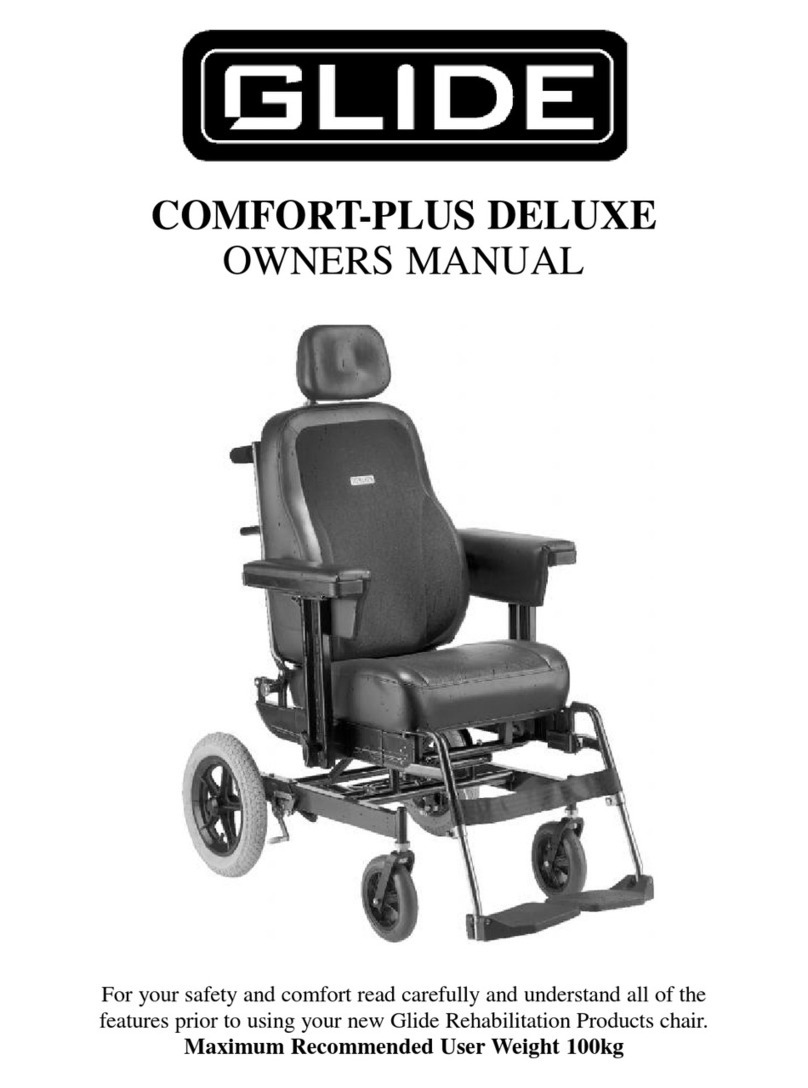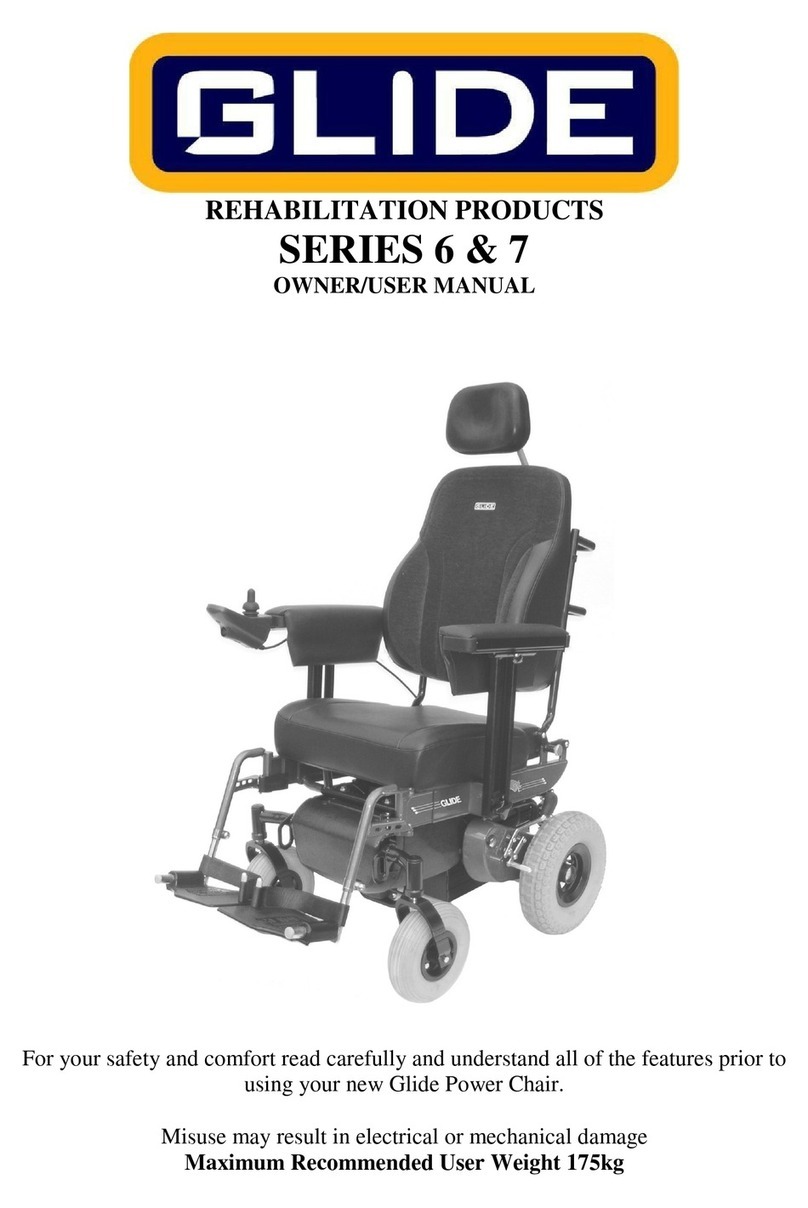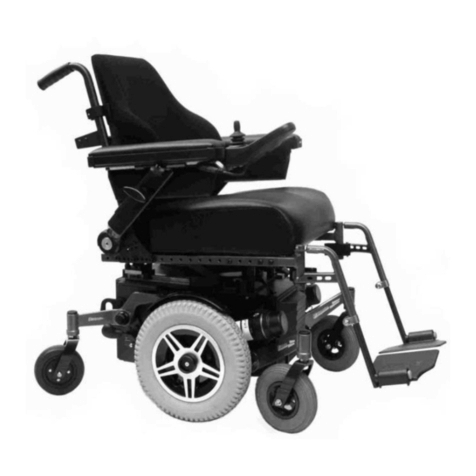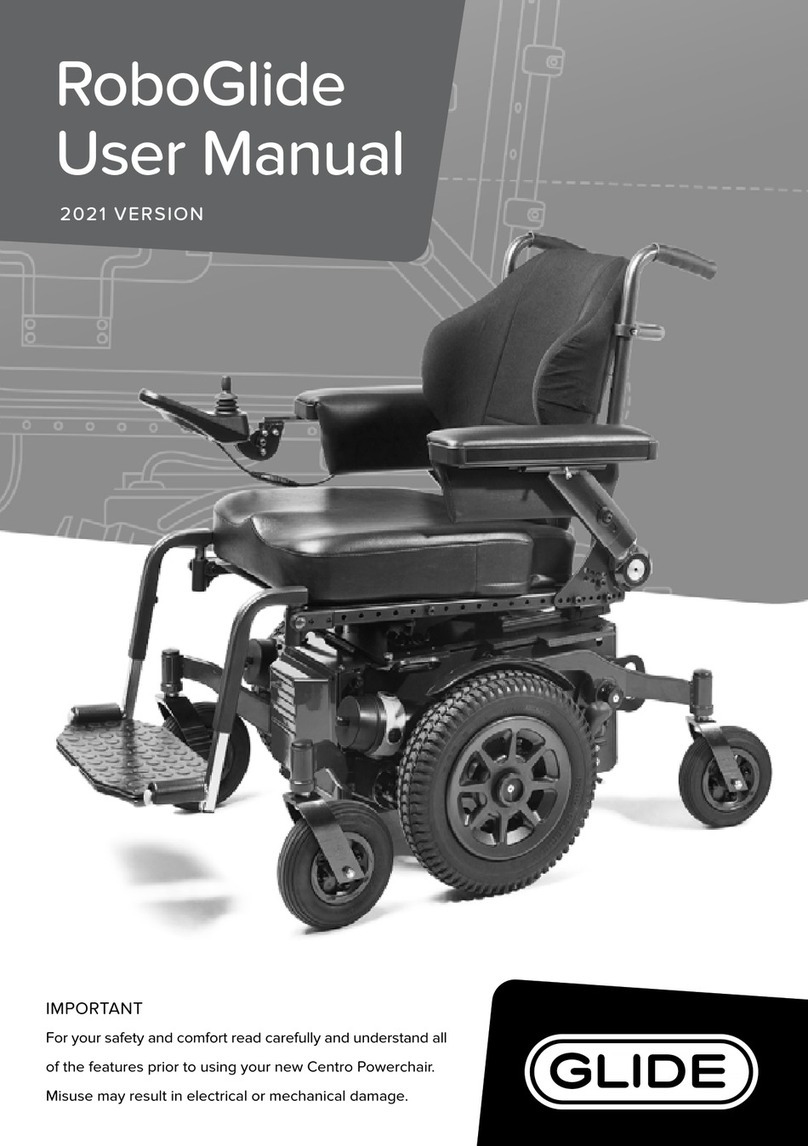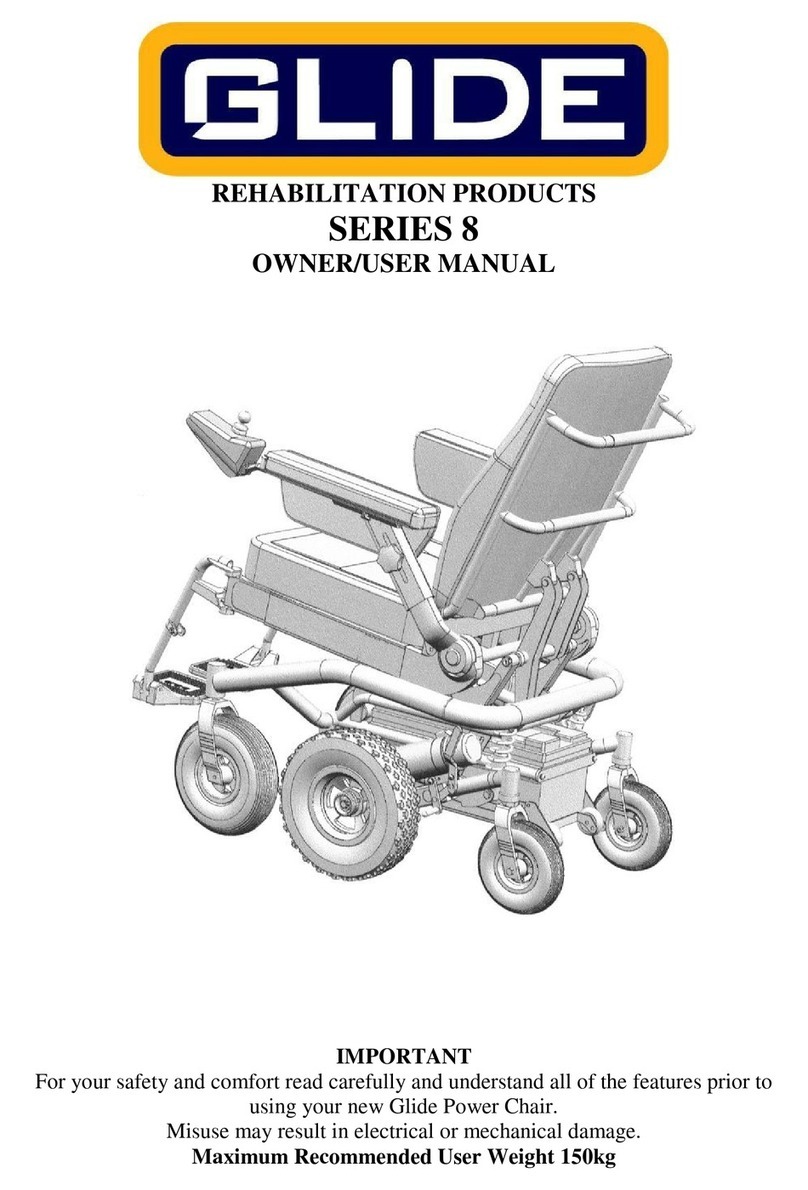5
Section 3.
Warnings
Read and understand the warnings stated in this section.
To the User WARNING!
1.
Before using this chair, obtain advice and training from your Health
Professional.
2.
Each chair is custom designed to suit individual needs. Take time to become
familiar with each feature before you begin driving.
3.
Depending on your level of function and ability, you will need to develop your
own methods for safe use.
4.
Understanding the environment where the wheelchair will be used will help
identify potential hazards and how to avoid them.
5.
Read this manual in full before operating chair.
6.
Never take wheelchair onto stairs or escalators.
To the Carer WARNING!
1. You must read this manual and follow all the instructions in each section as
they also apply to you.
2. Never use power operated options such as Vertical Lift, Power Elevators unless
occupant and bystanders have hands well clear of operation.
3. Drive clutches should be engaged at all times while occupant is seated.
When drive clutches are disengaged there is no braking when
manoeuvring wheelchair
4. To manually push the chair you must make sure that you have control over the
wheelchair before releasing the motor drive clutch. Only manually manoeuvre
wheelchair on level ground while occupant is seated in wheelchair. Never
manually manoeuver wheelchair up and down ramps whilst occupant is
seated in wheelchair.
5. You must develop an understanding of the occupants ability to develop safe
methods best suited to your ability
6. Only use the push handles to move chair. They are specifically designed for
this purpose
7. When helping the occupant overcome an obstacle you must:
•Learn safe methods from your health professional
•Explain clearly to the occupant what you are about to do and what
they are required to do
•When traversing curbs or steps always approach square on. Never
attempt angled approaches as this may damage castors.
